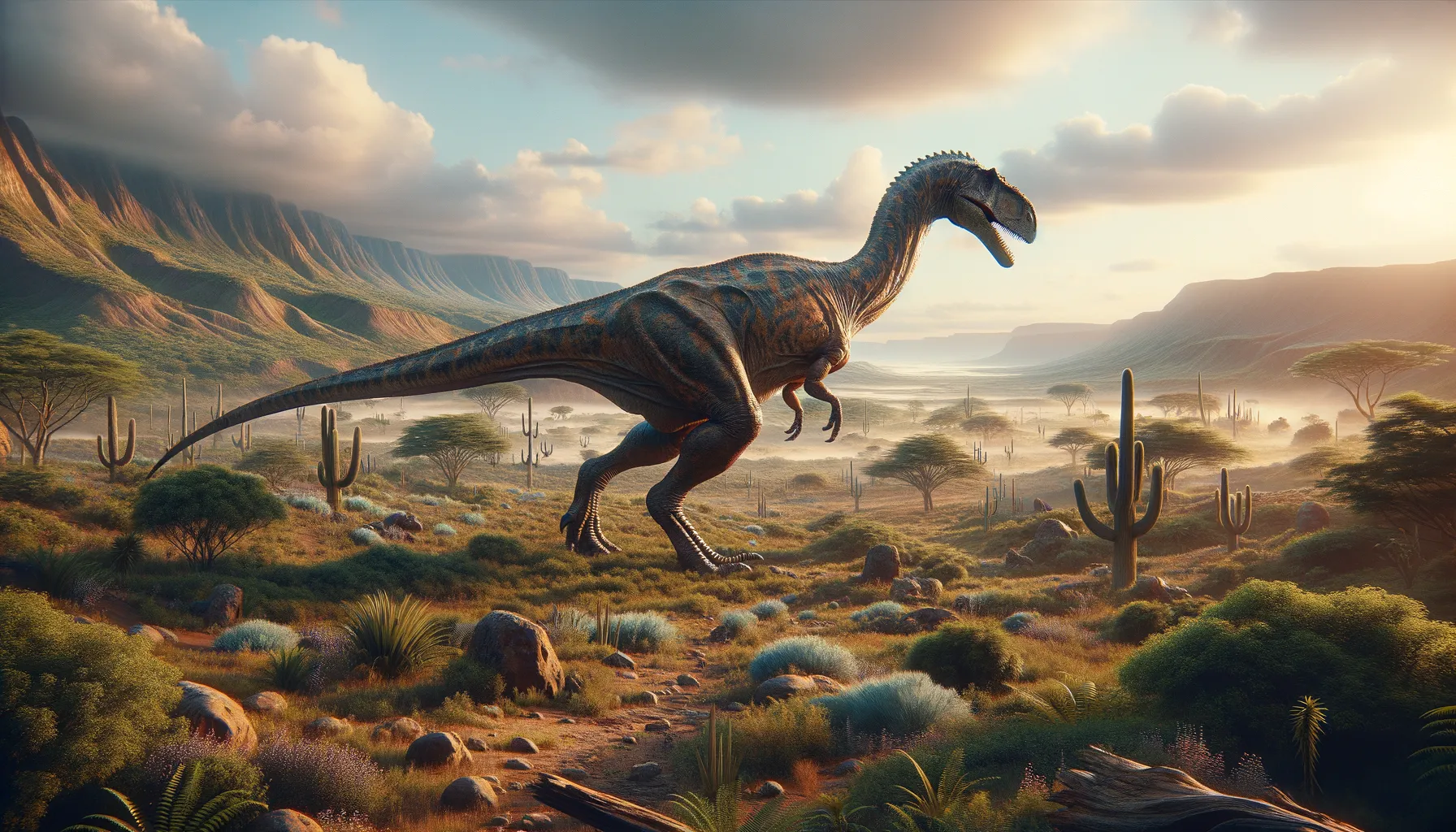
Meroktenos
A giant of the Jurassic with an African flair.
Period
Jurassic
Length
Around 7 to 9 meters long.
Height
Approximately 3 meters at the hips.
Weight
Estimated around 2 tons.
Meroktenos was an herbivorous dinosaur known for its robust body and long neck. It roamed the landscapes of the supercontinent Gondwana during the Jurassic period. This dinosaur had sturdy limbs, which suggest it could support a considerable amount of weight as it grazed on vegetation. Its fossils have contributed to the understanding of dinosaur evolution and paleoecology in the African continent.
Diet
Meroktenos primarily fed on plants available in its environment. It had developed teeth and jaws suitable for cutting and grinding leaves and other vegetation. As a herbivore, it likely spent a good portion of its day grazing.
Hunting
As a herbivore, Meroktenos did not hunt. Its primary concern was likely avoiding predators. It relied on its size for protection, challenging predators to think twice before attacking.
Environmental challenges
Meroktenos faced challenges such as fluctuations in vegetation due to climatic changes. These included shifts that could affect food supply. Competition with other herbivores in the area would have been another challenge. Predation from large carnivorous dinosaurs was a persistent threat affecting their survival strategies.
Speed
Likely slow, suited to its size and build.
Lifespan
Exact lifespan unknown, typical of large herbivores.
First discovery
Discovered in 2000 at the Red Sandstone Formation in South Africa.
Fun Facts
- Meroktenos is a dinosaur species that was discovered in what is now South Africa.
- This dinosaur lived during the Early Jurassic period, which was more than 190 million years ago.
- Meroktenos is known primarily from fossilized bones of its hind limbs.
- It was a part of the early sauropodomorph group, which later evolved into the giant long-necked dinosaurs.
- The name 'Meroktenos' means 'strong thigh' in Greek, highlighting its powerful hind legs.
- This dinosaur was likely herbivorous, feeding on plants that were common during its time.
- Meroktenos helps scientists understand the early evolution of dinosaurs that eventually led to famous giants like Brachiosaurus and Diplodocus.
Growth and Development
Meroktenos likely experienced a prolonged growth period to reach its large adult size. Juveniles may have had different feeding patterns as they grew. As they matured, their bones would have solidified, supporting heavier weights. This growth process likely contributed to their longevity and resilience.
Habitat
The habitat of Meroktenos would have included forested areas with plentiful plant life. Open plains might have offered additional grazing opportunities. Rivers or bodies of water nearby would have been vital for hydration. Living in Gondwana, the climate might have varied, influencing their daily activities.
Interaction with other species
Meroktenos likely coexisted with various plant-eating and predatory species. It may have formed herds for protection against predators like theropods. Interactions involved both competition for resources and predator-prey dynamics. Its large size would deter some predators, influencing its survival strategies.
Natural lifespan
Meroktenos may have lived for several decades like other large herbivores.
Reproduction
Reproduction for Meroktenos, like many dinosaurs, involved laying eggs. Nests were likely built in safe locations, possibly using vegetation for concealment. Parental care details remain speculative, but some degree of protection for eggs and young was probable. This strategy helped ensure the survival of offspring amidst diverse prehistoric threats.
Social behaviour
Meroktenos may have exhibited social behaviors typical of large herbivores, possibly forming herds for defense and social interaction. Group living could offer advantages such as vigilance against predators and increased foraging efficiency. Communication within the group would have been crucial, involving vocalizations or physical gestures.
Fossil locations
Fossils of Meroktenos have been found primarily in South Africa's Red Sandstone Formation. The discoveries have provided valuable insights into the diversity of dinosaur species on the Gondwanan landmass. These fossils are pivotal for understanding the distribution and adaptation of herbivorous dinosaurs in prehistoric Africa.
